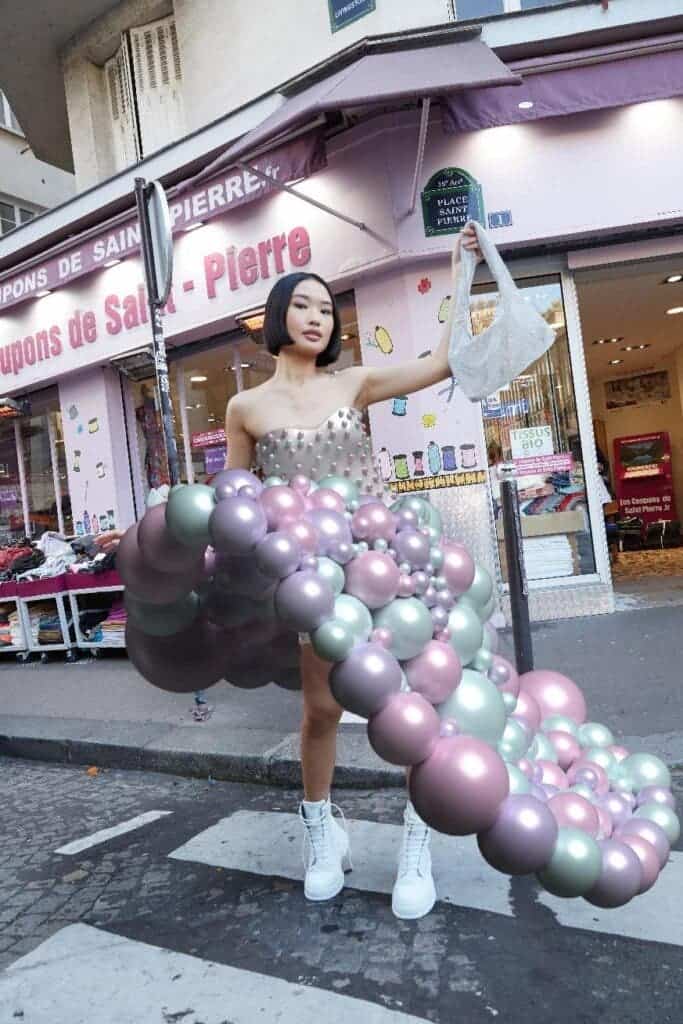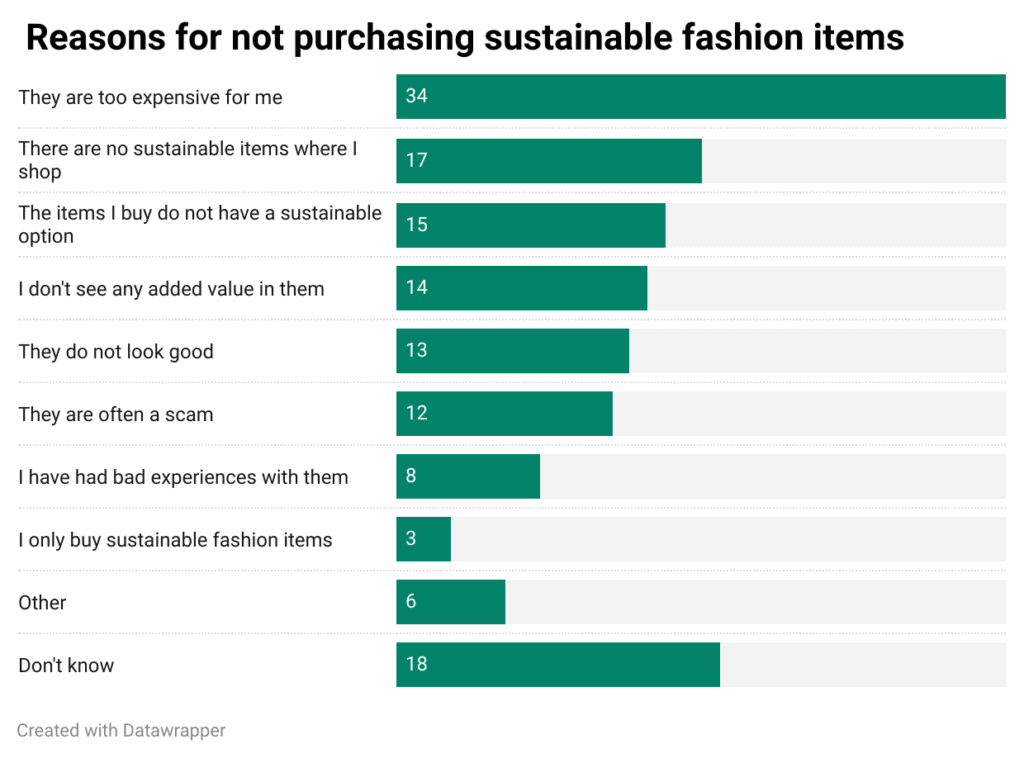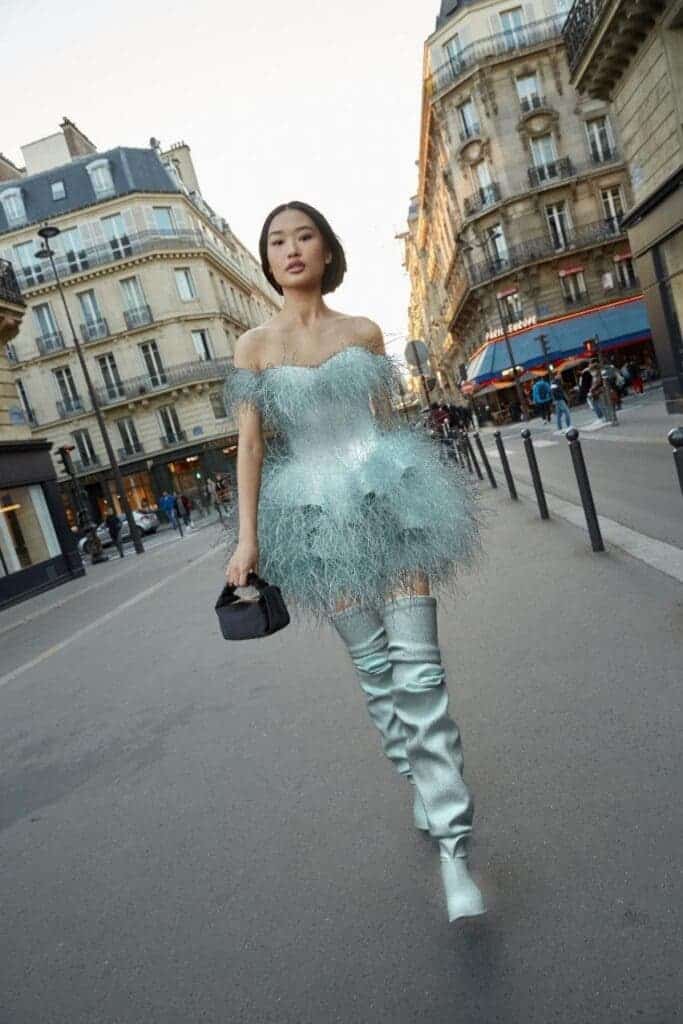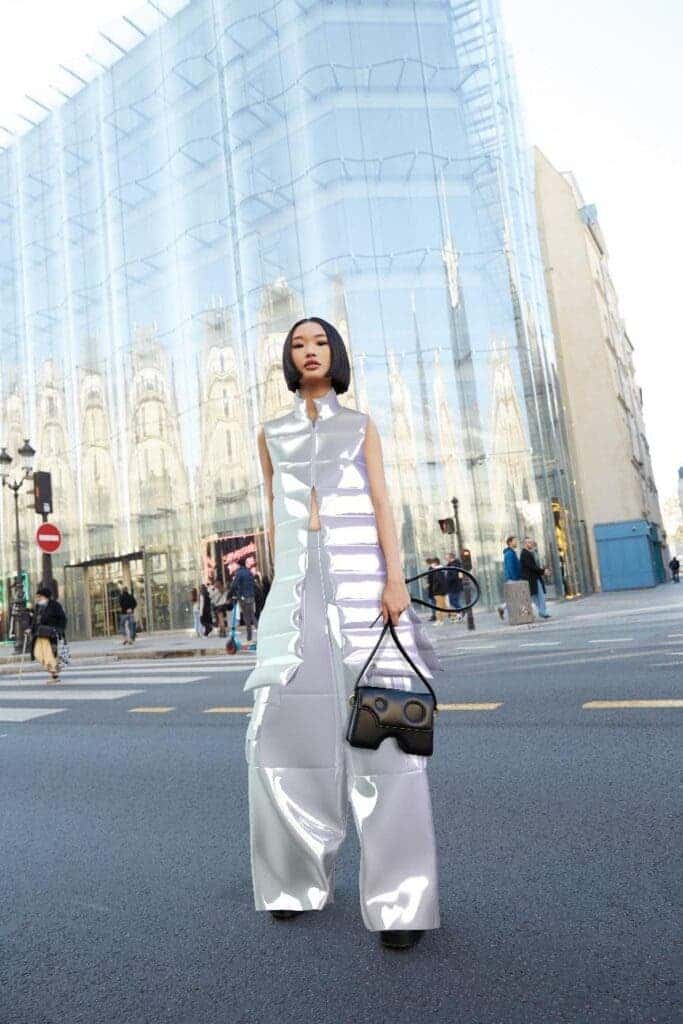Whether it’s new materials, sustainability, or virtual reality, the fashion industry is keen on embracing new modern trends. But even the essence of fashion (clothes) is not safe. The means of production and consumption have started to be digitized and clothes made entirely of pixels have become a reality.

Nothing changes as quickly as fashion. Today’s trends are gone tomorrow. With a single click on the refresh button, people get new ideas and “one minute ago” is already old news. So, industries had to adapt, and they had to do it fast. Traditionally, the fashion industry didn’t really rely on new technology — but you know what they say, “if you can’t beat them, join them” — and the digital environment offers excellent opportunities for fashion.
The pandemic, especially, has forced most fashion houses to move a big chunk of their businesses online and rethink their marketing strategies. Sales also went down as many people no longer felt the need to buy new clothes because there was nowhere to go. The lockdown caused a lack of social events and people were advised to work from home, so pyjamas became their go-to outfit. On top of this, fashion shows were canceled, so the creators had to organize them in an online medium.
But the fashion industry found a new toy: virtual clothes.
A make-over for the fashion industry
With companies vying for consumers’ digital attention, some have turned to video games or virtual reality (VR) to remain relevant, while others took a step forward and created cyber clothing collections. This type of clothing is made entirely of pixels and edited on the client’s body with the help of augmented reality. It is designed to be used only online, without a physical replica that you can wear in real life. Digital garments are gaining ground, solving problems such as sustainability, inclusivity and the economic crisis caused by the pandemic.
One of the first fully digital luxury brands is Republiqe, founded by James Gaubert in August 2020. The organization has its own designers who create original clothes, but they also collaborate with other brands to produce digital versions of their products.
Sustainability is the first problem Republiqe tries to address, Gaubert tells ZME Science. With 22 years of experience in fashion, Gaubert saw firsthand the environmental damage caused by this industry, so he wished to find an ecological solution to this.
“We wanted to challenge that and create fashion that is as sustainable as fashion can ever be, which means it’s digital. I get asked probably once or twice a month if we’re gonna bring out physical clothing and the answer is always: no. That goes against our complete ethos and focus as a business,” he said.
The problems raised by Gaubert are much more serious than they may seem. New research published in the International Journal of Environmental Studies found that clothing production has increased by 400% in the last 27 years, and this is taking a huge toll on the environment.
Sustainability woes
The means used in the manufacturing process of clothes are harmful to the planet. For a start, large quantities of natural resources are required; 60% of garments are made from petroleum-derived synthetic plastics, while 30% are from cotton. Other commonly used materials are wool, silk, and linen.
Energy is also a concern. Factories use 65,000 kilowatt-hours of electricity and approximately 250,000 liters of water to turn raw materials into fibers. The fashion industry is the second most water-intensive industry in the world, consuming around 79 billion cubic metres of water per year — it takes 2,700 liters to make an average T-shirt.
The problems don’t stop here. Rapid changes in fashion trends make a large percentage of the clothes go unsold. Just in the USA, around 85% of all clothes end up in a landfill, but their fabrics aren’t even biodegradable. Americans are considered the biggest consumers of clothing in the world.
Despite these destructive factors, most people do not take sustainability into account when buying clothes. The Global Consumer Survey conducted in the UK in 2021 revealed that 34% of the population considers sustainable fashion to be too expensive, while 18% does not know about eco-friendly garments — and this is in one of the most environmentally-conscious countries in the world.

Gaubert agrees that education and awareness play an important role in understanding sustainable and virtual fashion.
He said: “The biggest challenge for digital fashion brands is one around education because a lot of people still don’t really understand the concept. As people get educated and live their lives more and more online, the requirement will shift from physical [fashion] to digital.”
Digital garments are not made of real textiles, so they do not harm the environment. They are just a group of pixels gathered together with the help of advanced technologies and made to look like an actual outfit. This means clients cannot physically wear them.
Republiqe uses a whole range of different software, from the classical Photoshop to more complex Marvelous Designer, CLO 3D, Daz 3D and Augmented Reality to do the fittings.
The purchasing process goes like this: customers browse a fashion catalog, choose a piece of clothing that they like, pay for it, and upload a photo of themselves. After that, the tailoring team will work their magic and will fit the outfit on their body.
The final product is a professionally edited photo that can be uploaded on any social media platform.
Other digital fashion houses, such as Dressx, went further and created outfits that are suitable for wearing in videos.
Virtual clothing is not only beneficial for sustainability but also solves the problem of inclusivity. The clothes have no size, so they fit any body type.
“It doesn’t matter what age, sex, color, or size you are. We fitted garments to pregnant people who normally could only buy maternity wear. We fitted garments to people that have only got one leg, who would struggle to find clothing that fits,” said Gaubert.
Their best-selling collection, at the moment, is the denim one, but an all-time favorite is the fur section — because it is completely ecological. Real fur endangers the lives of animals and the fake one is made of plastic, which is also bad for the environment.

The appeal of virtual clothes
But why would people go through the trouble of spending real money to buy virtual clothes?
Well, they do not buy just clothes, they buy fantasies. They have the chance to wear outfits with flamboyant designs that would be impossible to achieve in real life. Do you want a blouse made from glass, trousers that shine brightly, or maybe you fancy an animated dress? Nothing is far-fetched in the digital world. In the case of Republiqe, designs often feature unusual elements, like balloons or fluorescent materials.
As the Zuckerberg-backed metaverse is starting to become a thing, people are valuing their online identity more and more. They’re seeking new ways to improve their virtual personas, so a computerized wardrobe might be the solution to look great with minimal effort.
Customers can let their imagination run free and experiment with different styles, without having to think about the impact their desires have on the environment or if they would find the right fit.
What’s more, digital garments have managed to remove the preconception that fancy clothes can only be worn on special occasions. Now, you can be “dressed” super extravagantly in mundane moments, without attracting attention and feeling self-conscious, because no one but you would know. In reality, you wear normal clothes, but the photos you take will be edited with the unique outfits you choose. Your phone becomes your runway.

Republiqe is one of the most affordable brands of virtual fashion, with prices generally ranging from $3 to $20. But virtual clothes can easily go for thousands of dollars. The English digital fashion house Auroboros is one such example. Known for its utopian designs, inspired by a SciFi universe, the company is not afraid to have high prices, up to $1,300. The same goes for The Fabricant, an Amsterdam-based company, which does a lot of collaborations with celebrities. Their best partnership was with artist Johanna Jaskowska for the ‘Iridescence’ dress, which sold for $9,500.
Like buying game skins, but for yourself
Republiqe revolutionized the way we look at fashion, but digital attires are not a new invention. Cyber garments have long been used to personalize avatars in video games and on some social networks but now, the time looks ripe for this to become a full-fledged industry.
James Gaubert revealed that he was inspired by the video games played by his son, when he created Republiqe. He saw the boy spending real money to buy clothes or skins for his characters, so Gaubert transposed this practice into his brand.
Now the customers are treated as “real-life avatars”, Gaubert said.
Whether you prefer to stick with real clothes or you want to try on some pixelated garments, it is impossible to ignore the advantages brought by digital fashion. With the ongoing pandemic, this type of products will continue to flourish and technology will take over runways completely.


